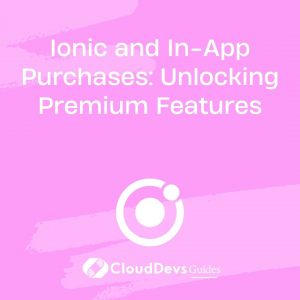Hire Ionic Developers Interview Questions Guide
Ionic, a popular open-source framework for building cross-platform mobile applications, leverages web technologies such as HTML, CSS, and JavaScript. When hiring Ionic developers, it’s essential to evaluate their proficiency in mobile app development, Ionic framework specifics, and web technologies. This guide will assist you in navigating the hiring process effectively, enabling you to identify candidates with the right skills for your mobile app projects.
Table of Contents
1. Reasons to Hire Ionic Developers
Embarking on the journey to hire Ionic developers? Here are key reasons to consider:
1.1 Cross-Platform Development
Ionic allows developers to build cross-platform mobile applications with a single codebase, saving time and resources.
1.2 Web Technology Stack
Leverage familiar web technologies, including Angular, for building robust and feature-rich mobile applications.
1.3 Native-Like Experience
Ionic provides a native-like user experience by utilizing Cordova/PhoneGap plugins, enabling access to device features.
2. How to Hire Ionic Developers
Follow these steps for a successful Ionic developer hiring process:
2.1 Job Requirements
Define specific job prerequisites, emphasizing skills in Ionic, Angular, TypeScript, mobile app development, and knowledge of web technologies.
2.2 Search Channels
Utilize CloudDevs’ expertise to connect with potential Ionic developers. Leverage job postings, online platforms, and tech communities to discover talented individuals.
2.3 Screening
Scrutinize candidates’ Ionic proficiency, mobile app development experience, and understanding of front-end technologies.
2.4 Technical Assessment
Develop a comprehensive technical assessment, including coding challenges and real-world scenarios related to Ionic development.
3. Core Skills of Ionic Developers to Look For
When evaluating Ionic developers, focus on these core skills:
- Ionic Framework: Proficiency in using Ionic for building cross-platform mobile applications.
- Angular: Strong understanding of Angular concepts, as Ionic is built on Angular.
- Cordova/PhoneGap: Knowledge of Cordova/PhoneGap plugins for accessing native device features.
- Web Development Skills: Proficiency in HTML, CSS, and JavaScript for building mobile app interfaces.
- UI/UX Design: Understanding of mobile app design principles and creating responsive layouts.
4. Overview of the Ionic Developer Hiring Process
Here’s an overview of the Ionic developer hiring process:
4.1 Defining Job Requirements and Skillsets
Lay the foundation by outlining clear job prerequisites, specifying the skills and knowledge you’re seeking in Ionic developers.
4.2 Crafting Compelling Job Descriptions
Create engaging job descriptions that accurately convey the role, emphasizing Ionic-specific skills required.
4.3 Crafting Ionic Developer Interview Questions
Develop a comprehensive set of interview questions covering Ionic intricacies, mobile app development, and relevant technologies.
5. Sample Ionic Developer Interview Questions and Answers
Explore these sample questions with detailed answers to assess candidates’ Ionic skills:
Q1. Explain the key differences between Ionic 3 and Ionic 4.
A:
Ionic 4 introduced significant changes, including the move to a standard web component-based architecture, improved performance, and better support for modern JavaScript frameworks.
Q2. How does Ionic handle navigation between pages in a mobile application?
A:
Ionic uses a NavController for managing navigation between pages. Navigation is typically done using the Angular Router, allowing for declarative navigation in the application.
Q3. Implement an Ionic service that makes an HTTP request to a RESTful API.
A:
// Sample Answer: Ionic service for HTTP request
import { Injectable } from '@angular/core';
import { HttpClient } from '@angular/common/http';
import { Observable } from 'rxjs';
@Injectable({
providedIn: 'root'
})
export class ApiService {
private apiUrl = 'https://api.example.com';
constructor(private http: HttpClient) {}
getData(): Observable<any> {
return this.http.get(`${this.apiUrl}/data`);
}
}
Q4. Describe the purpose of the Ionic CLI and provide an example of using it.
A:
The Ionic CLI is a command-line interface for developing Ionic applications. Example usage:
# Create a new Ionic project ionic start myApp blank
Q5. How can you optimize the performance of an Ionic application?
A:
Performance optimization in Ionic involves lazy loading modules, minimizing the use of heavy UI components, and optimizing images. Additionally, using Ahead-of-Time (AOT) compilation can improve performance.
Q6. Write an Ionic component that displays a list of items fetched from an API.
A:
<!-- Sample Answer: Ionic component for displaying a list of items -->
<ion-list>
<ion-item *ngFor="let item of items">
{{ item.name }}
</ion-item>
</ion-list>
Q7. Explain the purpose of the Ionic Grid system and provide an example of using it.
A:
The Ionic Grid system is used for creating responsive layouts. Example usage:
<!-- Sample Answer: Using Ionic Grid system --> <ion-grid> <ion-row> <ion-col size="6">Column 1</ion-col> <ion-col size="6">Column 2</ion-col> </ion-row> </ion-grid>
Q8. How does Ionic handle device-specific styling and theming?
A:
Ionic uses platform-specific styles and theming to adapt the app’s appearance based on the target platform (iOS, Android). This is achieved through CSS classes and variables.
Q9. Implement an Ionic page that includes a form with validation.
A:
<!-- Sample Answer: Ionic page with form and validation --> <ion-content> <form [formGroup]="myForm"> <ion-item> <ion-label position="floating">Username</ion-label> <ion-input formControlName="username" required></ion-input> </ion-item> <ion-button type="submit" [disabled]="!myForm.valid">Submit</ion-button> </form> </ion-content>
Q10. How can you debug an Ionic application?
A:
Debugging Ionic applications involves using browser developer tools for inspecting elements, checking console logs, and using Ionic CLI commands like ionic serve –devtools for more in-depth debugging.
6. Hiring Ionic Developers through CloudDevs
Step 1: Connect with CloudDevs
Initiate a conversation with a CloudDevs consultant to discuss your project requirements, preferred skills, and expected experience.
Step 2: Discover Your Ideal Match
Within a short timeframe, CloudDevs presents you with carefully selected Ionic developers from their pool of pre-vetted professionals. Review their profiles and select the candidate who aligns with your project’s vision.
Step 3: Embark on a Risk-Free Trial
Engage in discussions with your chosen developer to ensure a smooth onboarding process. Once satisfied, formalize the collaboration and commence a week-long free trial.
By leveraging the expertise of CloudDevs, you can effortlessly identify and hire exceptional Ionic developers, ensuring your team possesses the skills required to build remarkable mobile applications.
7. Conclusion
With these additional technical questions and insights at your disposal, you’re now well-prepared to assess Ionic developers comprehensively. Whether you’re developing mobile apps for iOS, Android, or other platforms, securing the right Ionic developers for your team is pivotal to the success of your projects.
Table of Contents







